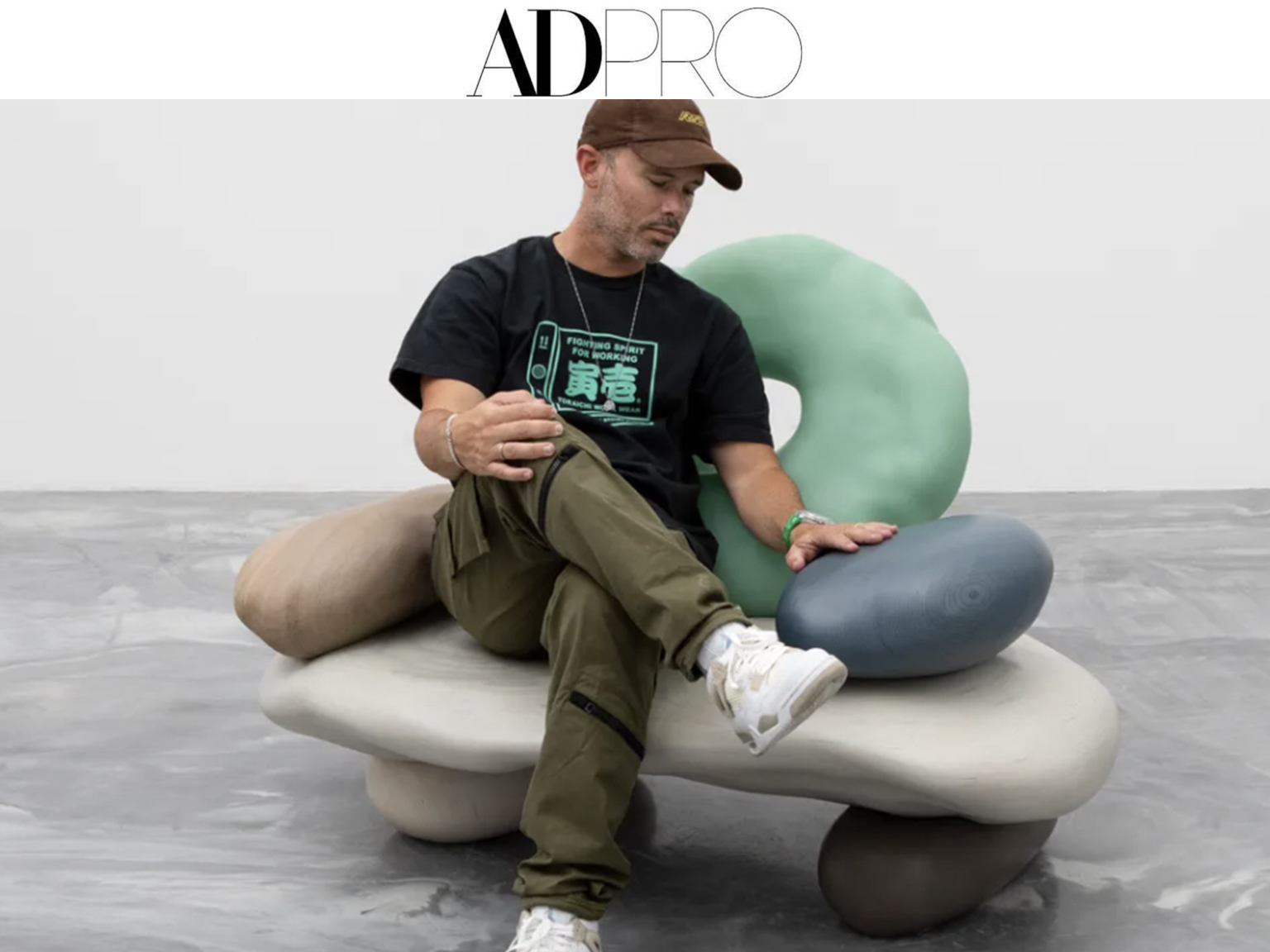By Alia Akkam
Ideas for Daniel Arsham’s second furniture collection began swirling at the height of the pandemic, when the multidisciplinary artist was hunkered down on Long Island with his family. Their Japanese-inspired abode—designed by modernist architect Norman Jaffe in 1971 and later conservatively revamped by Snarkitecture, the Brooklyn-based collaborative practice that Arsham cofounded with Alex Mustonen—“is an inspirational place,” he tells AD PRO.
It’s not surprising, then, that despite the home’s lack of a traditional studio setup, Arsham continued to find motivation in his sons’ drawing and painting supplies. A stash of Play-Doh, in particular, led him to imaginatively mold forms alongside his children—experiments that have now given way to the items comprising “Objects for Living: Collection II,” Arsham’s first solo exhibition at New York City’s Friedman Benda gallery, set to debut on August 30.
Arsham and the Chelsea outpost first united for “Objects for Living,” an immersive installation at Design Miami in 2019. In it, the designer recreated rooms of the Jaffe residence, filling them with the furniture by Arsham. An expansion of that theme, the works in the spotlight this time around were “created either for use at my house or in the studio. They’re really all things that I made for myself,” he explains.
They also deepen Arsham’s ongoing dialogue with Jaffe. Most of his house was fully restored to capture Jaffe’s vision, and the few altered areas, including the master bedroom and bathroom, “retain Jaffe’s language of materials—stone and wood and light—but they meander into Snarkitecture’s world of simplicity and whimsical design,” Arsham says. This new furniture, he adds, straddles the space between.
The range of 11 objects at Friedman Benda is small but striking. Highlights include the Pebbles armchair, which calls to mind an early-era throne; the Bedrock table, propped up by sinuous legs; and the petite Bamm-Bamm bench, reminiscent of an otherworldly garden stool. There is also a sofa, bed, and lighting. Each piece evolved from 3D scans of Arsham’s Play-Doh models, resulting in organic shapes rendered in birch, resin, steel, and bouclé upholstery. Natural stones, a nod to those he found on the beach behind the Long Island house, also play a starring role.
“If we imagine Fred Flintstone sitting on a stone couch, it probably doesn’t feel that comfortable,” Arsham says. “But if the ergonomics of it are correct, and it perfectly cradles your body, it could work. And this was what I was hoping to achieve with coaxing a comfortable and functional design object out of these very rudimentary, stone-like forms.”
Beginning with the original furniture collection, Arsham embraced a certain technique for milling plywood, shifting the plane and rotating the axis of the lamination, so that it “generates these very complex grain patterns in the wood,” he says. In the current series, these intricate details stand out in the heavy yet elegant hollow-back dining chair, as well as the seemingly kinetic floor lamp. One of Arsham’s favorites, the light fixture tilts at an angle, finding balance on its raised wood base. Arsham says, “It just feels like an iconic image.”
While Arsham deems his sculptural artworks conceptual, using materials “that cause you to sort of rethink your reality or your place in time,” his furniture by contrast is “much more direct, much more physical, much more playful.” Just as its Play-Doh origins would suggest.










